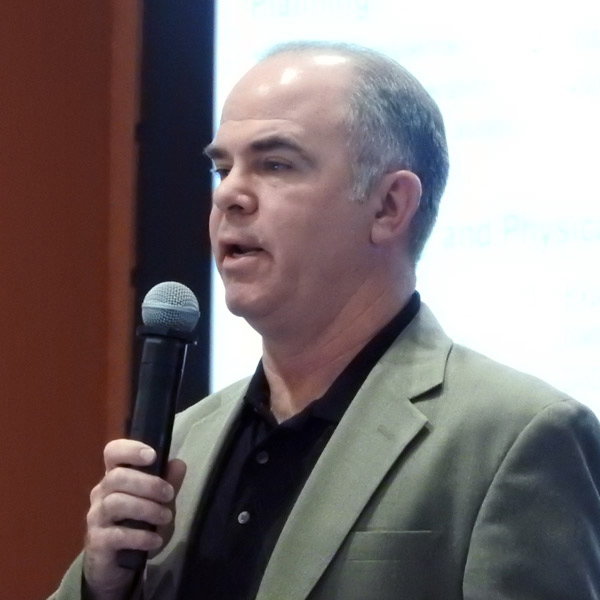VALLEY FORGE, Pa. — PJM last week offered stakeholders a series of suggestions for how the RTO could overhaul its capacity market in the wake of significant resource failures during the December 2022 winter storm.
The suggestions accompanied a presentation of PJM’s initial lessons learned from Winter Storm Elliott, intended to inform stakeholders as they consider capacity market changes through the critical issue fast path (CIFP) process.
The analysis is a precursor to the RTO’s anticipated July report on the storm’s impact, PJM’s Glen Boyle said during a May 17 CIFP meeting.
Elliott was the latest in a series of events showing that winter comes with significant risk, Boyle said, and PJM is recommending that stakeholders evaluate how it can improve its modeling to better account for the drivers of winter risk — namely, high loads and generation failures.
Citing the widespread failure of capacity resources to perform, despite high penalties under the capacity performance (CP) structure, PJM recommended revising capacity market incentives — including financial risks, strengthening accreditation requirements, increasing the frequency of testing and additional visits to generating sites.
Paul Sotkiewicz, president of E-Cubed Policy Associates, questioned the value of site visits, saying generators in other RTOs that conduct them regularly have told him the staff sent to facilities often don’t understand plant operations.
“Just because you send someone out there, doesn’t mean they know what they’re looking at,” he said.
PJM also found that market participants required education — both during the storm and in the penalty settlement process — on performance assessment intervals (PAIs), including what they are, how they function and where they are laid out in the governing documents.
The storm analysis also revealed instances in which the penalties weren’t aligned with dispatch basepoints, which Boyle said in part reflects a generator’s performance obligation not taking in account the generator’s characteristics, such as ramp rates.
Calpine’s David “Scarp” Scarpignato said many of the rules and procedures under discussion following Elliott were put in place deliberately. By not creating a penalty carve-out for generators’ ramp-rates, he said it was hoped that operators might find ways to start their units faster than their stated capabilities. Creating an exemption for ramp-rates would also risk allowing generators to be excused for hours, which would be unfair to resources that have fast-start capabilities.
“These rules are thought out; this isn’t something that accidentally happened, and I don’t want to lose sight of that,” he said.
PJM was a net exporter of energy throughout much of Winter Storm Elliott, which Boyle said led to increased obligations for capacity resources under the current balancing ratio formula. Many of the complaints filed at FERC seeking relief from penalties during Elliott argued that exporting during a PAI constitutes a tariff violation and effectively puts generators on the hook to provide capacity to resources outside PJM that haven’t paid for the service.
“The way I view exports is that a generator who signed up for a capacity commitment is being paid by PJM load-serving members and they have an obligation for that in exchange for that payment … and if they fail to provide that service, a penalty obligation is appropriate,” said ODEC’s Mike Cocco. “Here you have people outside the PJM system that are not paying these generators.”
PJM is also recommending a reevaluation of how resources whose offers cannot currently be translated into a performance obligation to benchmark performance against during a PAI can be fit into the framework. Those resources are not currently eligible for bonus payments or for excusal from penalties. Boyle said this mainly applies to resources with zero-cost offers.
Given that the current process for penalty excusals requires a large amount of manual work and case-by-case review, PJM also recommends that stakeholders consider options for streamlining the process.
A significant portion of the bonus penalties stemming from Elliott are being distributed to energy efficiency and demand response resources, which PJM said warrants an evaluation of whether their performance matches their reliability contribution.
PJM will continue to investigate poor performance of nonretail behind-the-meter generation (BTMG) during the storm and provide further recommendations on how to either make improvements or alter how those resources participate in the capacity market.
Speaking on behalf of the PJM Public Power Coalition, Customized Energy Solutions’ Carl Johnson said nonretail BTMG is governed by an agreement made prior to the creation of the capacity market and that performance during Elliott demonstrates that arrangement may need to be reconsidered.
Sotkiewicz said the recommendations and issues identified lack a focus on PJM operations during emergency conditions. Changes to market structures will have little impact if accurate forecasts aren’t developed and enough resources committed to maintain reliability, he said.
 Mike Bryson, PJM | © RTO Insider LLC
Mike Bryson, PJM | © RTO Insider LLCMorris Schreim, senior adviser for the Maryland Public Service Commission, questioned how improving the incentives for generators to perform would function while gas supply remains an issue, to which PJM’s Mike Bryson said a fuel assurance requirement will likely be part of PJM’s CIFP package.
Clearway Energy Presents CIFP Proposal
Clearway Energy presented a series of proposed changes to CP and the capacity market focused on tying the performance expectations for wind and solar resources to how they typically operate. Under the current methodology, in which resources have a flat obligation for all times and conditions, that expectation would usually be inaccurate, said Autumn Lane Energy’s Pete Fuller, representing Clearway. For solar, he said resources are below their obligation throughout the night and above it during most days.
By tying performance baselines to a renewable resource’s individual engineering characteristics, operators will be incentivized to ensure their facilities are operating at the peak of their capacity during emergencies, with all solar panels cleaned and ball bearings greased.
Fuller said Clearway echoes PJM’s desire for more frequent PAIs to make it easier for generators to evaluate and manage their risk. However, they disagree with PJM’s approach of creating a fixed number of ‘tier 2’ performance assessment intervals. Rather than using an “arbitrary number,” Fuller said additional performance hours should be pegged to system conditions.
“There may be a way to look at approaching a reserve deficiency or approaching stress on the system and defining that numerically,” he said.
Clearway’s approach to performance baselines for wind and solar would continue to calculate a resource’s annual reliability contribution through PJM’s existing effective load carrying capability (ELCC) methodology or a similar system, but would determine its output for purposes of performance assessment intervals on meteorological data and the operational characteristics reflected in its accreditation.
Fuller gave three ways of setting performance obligations under the proposal:
- a real-time dynamic baseline with five-minute granularity, which has the advantage of high accuracy;
- a baseline set with day-ahead forecasting, which would be less computationally intensive, but less accurate with hourly granularity; and
- creating a baseline using known characteristics of resources, such as not giving solar resources an obligation at night.
Monitor Adds Detail to Proposal
Independent Market Monitor Joe Bowring discussed the market clearing process in his CIFP proposal, saying the market clearing process would account for the hourly availability of resources and ensure that generators can cover their net annual avoidable cost.
“The proposal addresses the two functions of the capacity market: ensuring that there is enough energy to meet the load in every hour, and ensuring that generators have the opportunity to cover their avoidable costs — the so-called missing money,” he said.
Under the plan, resources would provide their expected hourly available megawatt profile and PJM would provide the expected hourly load plus reserve margin. The market clearing process would result in a single clearing price for each relevant location and identify the resources needed to reliably meet the load.
During the actual delivery year, if a resource’s energy output matched the modified availability factor in its capacity market offer, it would receive the capacity clearing price in for each hour. If a resource did not perform, it would not be paid. Generators that didn’t fully clear the auction would be eligible for make-whole payments, exactly like the status quo rules.
PJM’s Walter Graf said that since the Monitor’s proposal treats every hour the same, if the grid were to be in emergency conditions and shedding load in one hour, an underperforming capacity resource would receive less than its full capacity revenues; however, it would be able to make that up by overperforming when the grid is not stressed.
“The most fundamental concern I have with this model is that of pricing,” Graf said. “I think what you’re attempting to do in the auction is attempting to identify the least-cost [clearing] resources,” but then compensate every megawatt-hour at the marginal cost of the highest clearing resource. He said he was concerned that the mismatch between value and compensation introduces opportunities for strategic bidding, doesn’t support a competitive equilibrium and doesn’t incentivize resources to offer at their costs, but instead submit a low offer to clear fully.
Bowring said he disagreed with each of the assertions and that PJM’s proposal fails to address the identified issues as fully as the Monitor’s proposal. He pointed out that the current design, and the design favored by PJM, pays a single clearing price for the entire year, based on the marginal cost of the highest clearing resource, which is the same thing as paying the same price in every hour. The Monitor’s proposal, unlike the PJM proposal, does not pay the capacity price to resources that are not available in an hour. Bowring said the proposal recognizes that the PJM energy market provides the required hourly and locational incentives to produce when conditions are tight and prices high. Though he doesn’t believe it’s currently necessary, he said it would be straightforward to add differential penalties to the model.
Calpine’s Scarp questioned why the proposal verifies performance for each hour if each hour is treated the same, suggesting the process could be simplified by using resources’ equivalent forced outage rates (EFORd).
“Why do all this accounting and measure all these things when really you’re only interested in one number at the end of the year,” he said.
Bowring responded that EFORd is not as comprehensive a metric of availability as the proposed Modified Availability Factor. An hourly approach is essential, considering the growing role of intermittent resources, which, unlike thermal resources, are not available in every hour, he said.
Bowring said the hourly approach is preferable to ELCC, which is also based on hourly data, and the hourly approach pays resources only when available. Paying for performance is not possible when using only a simple average approach, he said.



